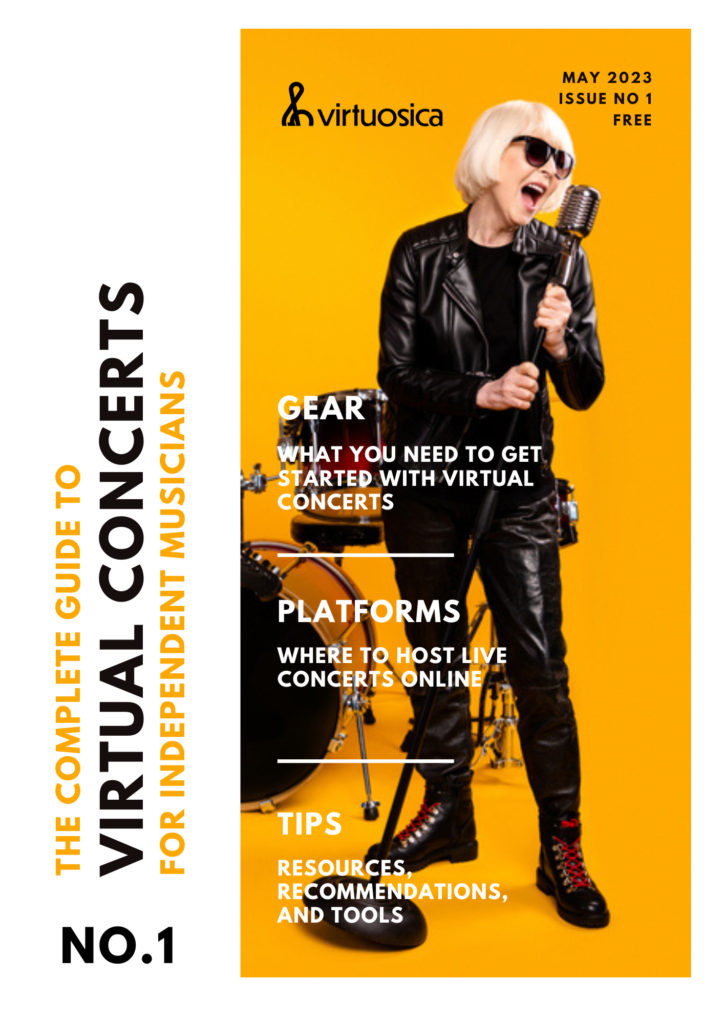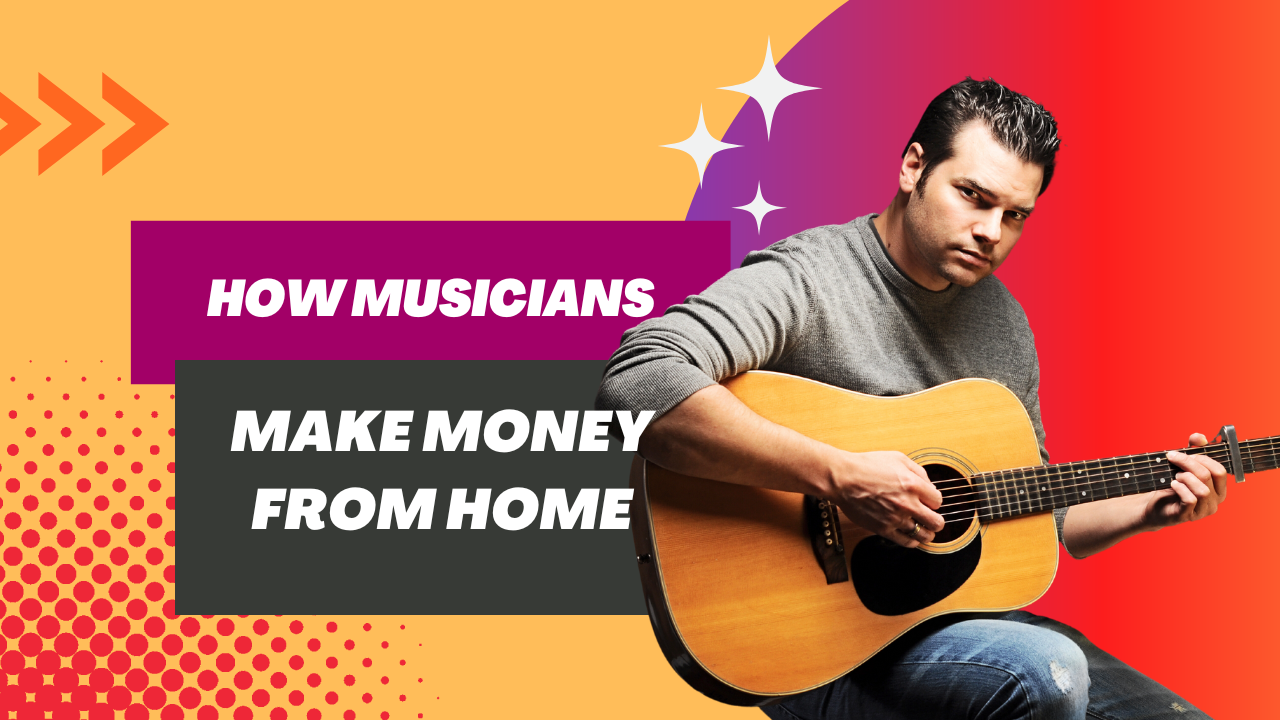As the music industry finally meets the internet’s full potential, musicians are more empowered than ever to take control of their careers and revenue streams. Pioneering the digital stage has become a game-changing move for musicians worldwide, providing artists with boundless opportunities to perform, engage with fans, and ultimately, make money from the comfort of their homes. Nearly every other industry has provided some WFH options – and, finally, here’s how musicians make money from home too.
The digital revolution is more than just a response to recent global events that have limited live performances. It’s part of a wider shift in the industry that places emphasis on artist independence and direct-to-fan relationships. Today, musicians are leveraging their talent and digital savvy to create rewarding and sustainable careers on their own terms.
Navigating the Digital Landscape: An Overview
There is no one platform to rule all platforms for musicians who are looking to get their music and musical skills seen and heard. What’s worked for others may not work for you, and vice-versa. The good news is that there are more opportunities and platforms to choose from than ever before.
Navigating the digital landscape as a musician can sometimes feel overwhelming with so many platforms to consider, and with each offering its own unique advantages. Here, we’ll overview some of the most effective ones, helping you understand their potential and how they fit into your digital strategy. Each of these platforms offers a unique way for you to connect with your audience, distribute your work, and generate income. The “trick” is to choose the platforms that align with your music, brand, and overall career goals.
Online Music Distribution Platforms
Digital music distributors, like DistroKid, CD Baby, and TuneCore, enable independent musicians to distribute their music to major streaming platforms such as Spotify, Apple Music, and Amazon Music. These are nothing new, but may be complex to navigate for many musicians. While they offer musicians an opportunity to get their music heard by millions without the need for a traditional record label, they are also useless for musicians who don’t yet have a fair amount of original music to publish.
Social Media Platforms
Facebook, Instagram, TikTok, and Twitch are excellent tools for promoting your music, connecting with fans, and building your brand. TikTok, with its viral nature and music-centric content, has also become a key player in music discovery and promotion. Again, social media in music promotion is nothing new, but very few independent musicians have figured out how to harness the vast power of social to promote their music and skills. Like most marketing efforts, social media promotion requires investment, in either cash or time, and the average musician tends to have little of both. Pro tip: use social media to go live whenever you can, even if it’s just a practice session, and connect with your audience. And look out for those pesky copyright terms and conditions.
Content Sharing Platforms
YouTube and Vimeo allow you to share music videos, lyric videos, and behind-the-scenes content, serving as a visual companion to your audio releases. However, these platforms also have complex terms and conditions when it comes to copyright, and these vary from one geographic region to another.
Music-centric Social Platforms
SoundCloud and Bandcamp focus specifically on music sharing, with Bandcamp additionally offering an integrated model for selling your music directly to fans. Yet again, these only work with artists’ original music and it’s always harder to break through with original music than it is with covers or remixes.
Livestream and Virtual Concert Platforms
Twitch, originally a platform for gamers, has developed into a hub for live music performances. Meanwhile, specialized platforms like Virtuosica are explicitly designed for musicians to get hired for and stream high-quality virtual concerts, providing an immersive and engaging live music experience for fans from the comfort of their homes.
Fan Funding Platforms
Patreon and Ko-fi are platforms where fans can financially support their favorite artists on a subscription or per-creation basis. In return, artists often provide exclusive content, early access to new music, or other perks. The great thing about fan-driven crowdfunding platforms is that you can always use them alongside any other platform.
Merchandise Platforms
Sites like Merchbar and Teespring let you design and sell custom merchandise, another revenue stream that also helps promote your brand.
How Musicians Make Money from Home Using Digital Platforms
While some of these are obvious and fairly easy to get started with, others are just emerging and a great opportunity for early adopters. In this post, we don’t just stop at listing how to make money online as a musician. Scroll down to find out how much musicians using these platforms and methods can make on average.
Teaching Music Lessons Online
Online teaching platforms have become increasingly popular, opening up avenues for musicians to share their knowledge and passion with eager students worldwide. Platforms such as TakeLessons and Lessonface are specifically designed for musicians and offer a range of features to support online teaching. These platforms handle scheduling, payments, and provide a virtual classroom environment.
Use your social media platforms to promote your online classes. Highlight the unique aspects of your teaching style, your expertise, and create compelling visuals. Offering a trial lesson or discounts for booking multiple lessons can also attract students.
Selling Merchandise Online
If you’re somewhat established as an artist or a band, merchandising can be a fantastic way to generate additional income and strengthen your brand. Etsy and Shopify are two popular platforms where you can set up an online shop for your merchandise. They offer user-friendly interfaces and a wide range of tools to manage your online store.
Design merchandise that resonates with your music and your brand. T-shirts, posters, and vinyls are standard, but consider unique items that your fans would appreciate. Promote your merchandise on your social media and at your virtual concerts.
Crowdfunding and Fan Donations
Again, crowdfunding can be a powerful tool to fund your projects or supplement your income. It also fosters a sense of community among your fans. Patreon is the most popular platform that allows your fans to support you on a monthly basis in exchange for exclusive content or experiences. For one-off projects like album recording or a music video, Kickstarter can be a great choice.
Be clear about what the funds will be used for and offer enticing rewards to your supporters. Regular updates on the progress of your project can also help keep your supporters engaged.
Virtual Concerts
One of the game-changers in the independent music scene is the advent of virtual concerts. But they’re so much of a new thing (even though they’re really not) that most musicians think they’re still out of reach, complex and expensive to create. In the last couple of years, platforms like Bandacamp and Virtuosica have created easy-to-use DIY options for musicians and private concert hosts to be able to put on virtual concerts with just a few clicks.
And, to clarify, we don’t mean virtual concerts in the metaverse either. Virtual concerts are essentially music performances streamed live on the internet. They can be as simplistic as a solo artist performing in their living room with a webcam or as elaborate as a fully staged concert experience with multi-camera setups and professional-grade audio.
There are several ways musicians can generate revenue from virtual concerts. Aside from ticket sales or gettig paid directly for a one-off private performance, you can offer VIP packages, backstage passes, and even sell merchandise. American rock band Code Orange, known for their innovative approaches, conducted a live-streamed album release show on Twitch when the pandemic thwarted their physical show plans. The event, streamed for free, also had a virtual merchandise booth, and the sales were through the roof, indicating fans’ willingness to spend on virtual experiences.
What makes virtual concerts a lucrative opportunity is the boundless reach they offer. With no geographical constraints and no need to travel or lug equipment around, musicians can connect with fans worldwide and perform daily, if they choose to. It eliminates the need for expensive logistics and venue booking, cutting down on the costs significantly, for both musicians and fans.
How Much Money Can Musicians Make Online?
Monetizing music online can be a lucrative endeavor, and the potential earnings can vary greatly based on what you’re selling, the time investment, and the financial resources required. Let’s explore how various online activities stack up.
Virtual Concerts
Virtual concerts can bring in substantial income, especially for artists with a solid fanbase. For example, if you price your tickets at $10 and have 100 attendees, you could earn $1,000 from a single concert. Of course, there are platform fees and other costs to consider, but with careful budgeting, these costs can be managed. The beauty of virtual concerts is that the size of your audience isn’t constrained by a physical venue.
Teaching Music Lessons Online
Private lessons range in price depending on the instructor’s experience, instrument, and location, but typically you could charge anywhere from $20-$100 per hour. If you had ten students taking a one-hour lesson every week, you could be looking at $800 to $4,000 per month.
Selling Merchandise
The profit from selling merchandise depends on the cost of production, the price point, and the volume of sales. An artist might make a few dollars from a $20 T-shirt after production and shipping costs. But if you sell 100 shirts a month, that could result in a few hundred dollars in profits.
Crowdfunding and Fan Donations
The income from Patreon or similar platforms can vary widely. However, if you can offer exclusive content that fans are willing to pay for, it can provide a steady stream of income. Some musicians earn thousands per month on Patreon, but it’s more common to earn a few hundred dollars.
Online monetization efforts often require a significant time investment, particularly for activities like teaching or creating exclusive content for Patreon. However, these methods often require less financial investment than merchandise production or concert organization.
In terms of stability, teaching lessons and Patreon donations tend to provide the most predictable income streams, as they are subscription-based or recurring. Selling merchandise and virtual concerts can be more unpredictable, but they have the potential for higher earnings.
Comparatively, according to the U.S. Bureau of Labor Statistics, as of 2020, the median wage for musicians and singers was $31.40 per hour, or roughly $65,312 annually for full-time work. However, many musicians work part-time, and their incomes can be unpredictable and vary widely. The rise of digital platforms has provided additional avenues for musicians to supplement their income, and in some cases, even surpass what they would earn from traditional musical activities.
The bottom line: The digital music landscape is brimming with opportunities for musicians to monetize their talents. The key to success lies in understanding your audience, diversifying your income streams, and leveraging online platforms effectively.


